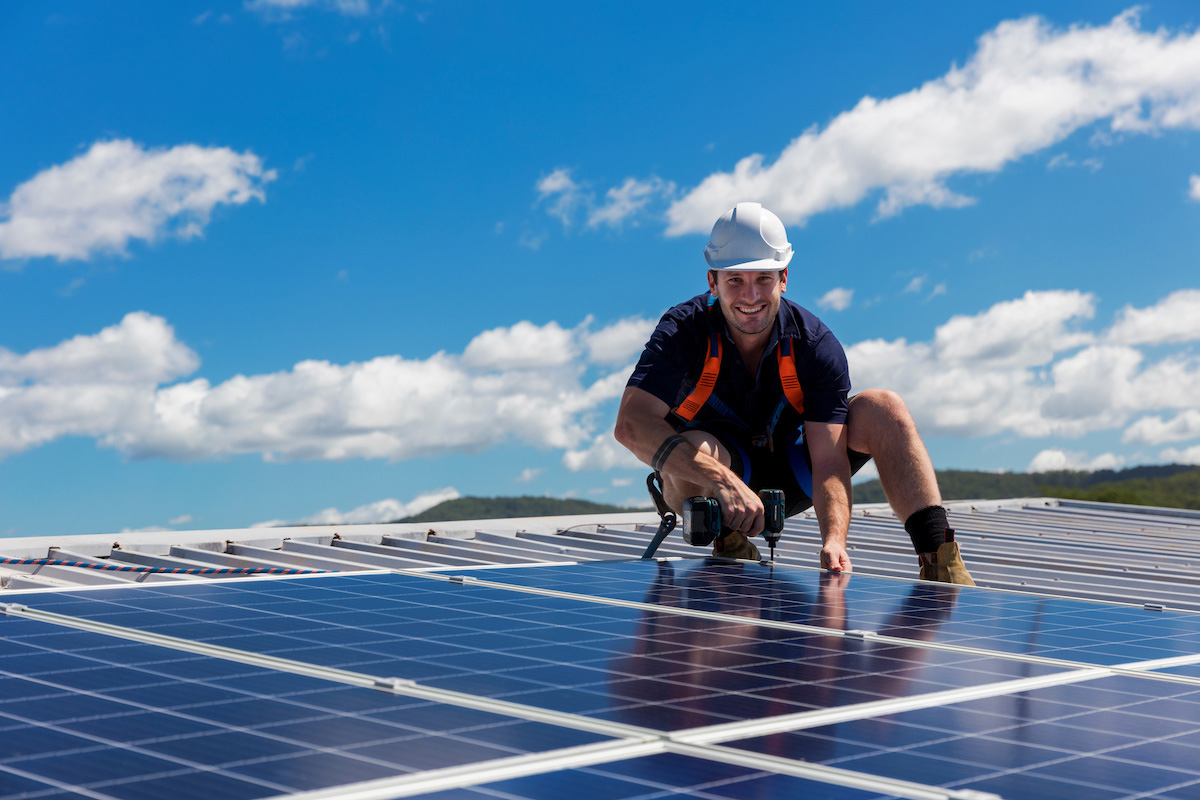Climate change is an unfortunate reality for us here on planet Earth. But you can make some changes in your home that can potentially help the issue. One of the main ways to help? Switching to renewable energy. When you install solar panels for your house, you’re generating your own electricity and taking some of the strain off the grid. However, you need to be sure it’s the right option for you before diving in. Solar panels benefit the environment in 5 ways. Here’s what you should know about installing your own solar panels.
Why Choose DIY Home Solar Installation
There’s nothing quite like the feel of finishing a big project yourself and seeing it in action, and that’s one of the draws of DIY solar panel installation! You can also enjoy these other benefits, as well.
- Independence from the energy conglomerate
- Money savings on your electricity bill
- Potential options to sell energy to the utility company
- Cost-savings on installation
- Reduce your carbon footprint
- Support a burgeoning industry
- Low maintenance
- Improves property value
Drawbacks of DIY Home Solar Installation
You may be saving money and feeding your desire for DIY projects, but installing your own solar panels isn’t always the best option.
- It’s expensive up-front to buy all the materials.
- It’s time-consuming to install them all yourself.
- You get what you pay for.
- You have to know how to install them correctly, or they may not work as intended.
- All the maintenance and upkeep falls on you.
- You’ll have to deal with permits and applications on your own.
- Installing the panels yourself may void warranties and disqualify you from some tax rebates.
- Installation can be dangerous if you don’t know what you’re doing.
How Much Can You Save By Installing Solar Yourself?
According to Consumer Affairs, it can cost anywhere between $5,000 and $40,000 to get solar panels installed. That number depends on how many panels you need, what type of panel you’re getting, where they’re being installed, and more. Also, 75 percent of that cost is for labor. So if you can get inexpensive panels on your own and install them yourself, you could be saving tens of thousands of dollars. Keep in mind though, that some states will nullify your rebate if your panels weren’t installed by a certified installer.
Basic Steps of DIY Home Solar Installation
Installing your own home solar panels is a six-step process:
- Figure out exactly what you’re going to need to run your household and power the things you’d like to utilize with the panels.
- Purchase all the materials you’ll need. This includes the panels, the racks, batteries, warranties, and more.
- Install the racks or mounts. You can’t add the panels without something for them to sit on!
- Add the panels to your equipment.
- Have the system inspected and apply to connect to the power grid.
- Turn the system on and enjoy your renewable energy supply!
Thing to Consider While Planning for Your Installation
The biggest things you’ll need to consider when you’re planning a solar panel installation are system type, location, and amount. How many solar panels will you need to get the amount of power that you’re looking for? You can figure that out with a calculator (there are a variety of options available online, per state), though most homes need at least 20 to fully offset their power usage.
You’ll also need to know where you’re going to place them. If you have space in your yard, that might be a good option — but if you have a small yard or don’t want to give up that area, you might consider attaching them to your roof. Have a look around and see where they’ll best fit, based on how large they are and how many you need.
The other important information you’ll need to know before you decide is the type of solar system you want to install. The three main types are grid-tie, hybrid, and off-grid. As you can probably guess, this determines whether you’ll still be attached to the power grid, only attached to it partially, or not attached to it at all. Some states govern which type of system is allowed, so check your local regulations to make sure you can use what type of grid you’d like to use.
Installation Tips
Don’t skip the important steps of your installation that may not seem installation-related at all. Make sure you do the math and research to know if what you are skipping will actually benefit you monetarily. Don’t try to install your panels without the proper approvals from your town and inspections from qualified parties.
Home Solar Maintenance
If you get an adequate quality solar panel, it should have a lifespan of about 25 years — assuming you stay on top of maintenance and upkeep. On the plus side, the maintenance is not too difficult. You’ll need to make sure the panels are free of debris, like leaves and branches, and anything else that might have fallen onto them. You should clean them occasionally using a soft brush and water, or you can hire someone to do this. Scratching them will compromise the energy-absorbing capabilities, so be sure you’re cleaning the panels correctly. That being said, check your warranty when you purchase the panels; it may include maintenance coverage. Lastly, be sure to install a solar monitoring system to track the panels’ performance. This way you’ll conveniently know if something needs to be fixed.

